Live Edge vs Sintered Stone Dining Tables: Which Material Is Right For Your Home?
Table Of Contents
- Introduction
- What Is a Live Edge Dining Table?
- What Is a Sintered Stone Dining Table?
- Comparing Aesthetics and Design
- Durability and Longevity Comparison
- Maintenance Requirements
- Environmental Considerations
- Cost Comparison
- Which Table Is Right for Your Home?
- Styling Tips for Both Table Types
- Conclusion
The dining table is more than just a piece of furniture—it's the heart of your home, where family gatherings happen, meals are shared, and memories are made. When selecting this central piece, the material choice significantly impacts not only the look of your dining space but also its functionality and longevity.
Two materials that have gained tremendous popularity in recent years are live edge wood and sintered stone. Each offers a distinctive aesthetic and unique benefits that cater to different lifestyle needs and design preferences. At Loft Home Furniture, we've helped countless Singapore homeowners find their perfect dining table match, and we've seen firsthand how these material choices can transform a dining space.
In this comprehensive guide, we'll explore the defining characteristics of live edge and sintered stone dining tables, compare their durability, maintenance requirements, environmental impact, and cost considerations. By the end, you'll have a clear understanding of which table material aligns best with your lifestyle, aesthetic preferences, and practical needs. Let's dive into the natural beauty of live edge versus the contemporary elegance of sintered stone.
What Is a Live Edge Dining Table?
A live edge dining table showcases the natural edge of the wood slab in its design, preserving the original contours of the tree trunk. This organic edge becomes a defining feature of the table, creating a one-of-a-kind piece that celebrates the tree's natural form.
Key Characteristics of Live Edge Tables
Live edge tables are crafted from solid wood slabs that maintain at least one natural edge where the bark was removed. Every live edge table is inherently unique due to the natural variations in the wood grain patterns, knots, and organic edge formations. Common wood species used include walnut, oak, maple, and acacia—each bringing its own color palette and grain personality.
These tables often feature a clear, matte finish that protects the wood while highlighting its natural beauty. The base or legs typically employ metal or complementary wood designs that balance the organic top with architectural support. The authentic connection to nature is undeniable in these pieces, with each table telling its own story through growth rings, grain patterns, and natural features.
Manufacturing Process
The creation of a live edge table begins with carefully selecting quality timber, often from sustainable sources. After cutting, the wood undergoes a lengthy drying process that can take months to years, depending on the wood's thickness. This crucial step prevents future warping and cracking.
Once properly dried, skilled artisans remove the bark while preserving the natural edge contour. The slab is then flattened and sanded to a smooth finish while maintaining natural characteristics like knots and grain patterns. Multiple layers of protective sealants are applied to enhance durability without masking the wood's natural beauty. Finally, the table is paired with a complementary base design, resulting in a functional piece of art that brings natural warmth to any dining space.
What Is a Sintered Stone Dining Table?
Sintered stone is an engineered material created through a process that mimics the natural formation of stone but accelerated to take hours rather than thousands of years. The result is an ultra-compact, non-porous surface with exceptional technical properties that make it ideal for dining tables.
Key Characteristics of Sintered Stone Tables
Sintered stone tables feature remarkably consistent patterns and colors, available in a wide range of designs from marble-look to solid colors and contemporary patterns. The material is engineered to be non-porous, making it completely resistant to stains from food, beverages, and household chemicals—a significant advantage for dining surfaces.
These tables are scratch-resistant and can withstand direct contact with hot dishes without damage. The surfaces are UV stable, meaning they won't fade or discolor when placed near windows with direct sunlight. Modern sintered stone tables often feature slim profiles (typically 6-12mm thick) that create a sleek, contemporary aesthetic supported by minimalist metal frames.
Manufacturing Process
The production of sintered stone involves blending natural minerals (clays, feldspar, silica, and mineral oxides) into a fine powder. This mixture is compressed using vast amounts of pressure—up to 15,000 tons—to remove air and create a dense material. The compressed material then undergoes sintering, where it's fired in kilns at temperatures exceeding 1200°C (2200°F).
This extreme heat triggers particle fusion without actual melting, similar to how natural stone forms over millennia but accelerated to a few hours. The result is an ultra-compact material with exceptional technical properties. The slabs are then cut to size, finished with the desired edge profile, and mounted on custom bases. The sintered stone table offers modern elegance with practical benefits for everyday dining.
Comparing Aesthetics and Design
Live Edge Aesthetics
Live edge tables exude organic warmth and natural character that immediately draws attention in any dining space. Each table tells a unique story through its one-of-a-kind grain patterns, knots, and natural edge formations. The warm tones and tactile nature of wood create an inviting atmosphere that connects your dining experience to the natural world.
These tables excel in rustic, farmhouse, Scandinavian, and organic modern design schemes where natural materials take center stage. They bring instant texture and visual interest to minimalist spaces and complement other natural materials like stone, leather, and woven textiles. The inherent uniqueness of each piece means your table will be genuinely one-of-a-kind.
Sintered Stone Aesthetics
Sintered stone tables embody sleek sophistication with their precise, consistent surfaces and clean lines. These tables offer remarkable design versatility as they come in a wide array of patterns—from convincing marble look-alikes to industrial concrete effects and bold solid colors.
The material's ultra-thin profile creates a floating, lightweight visual effect despite its actual durability. Sintered stone tables become natural focal points in contemporary, minimalist, industrial, and luxury modern interiors. They pair beautifully with a range of materials, from metal and glass to upholstered dining chairs for textural contrast.
Design Flexibility
When comparing design flexibility, live edge tables offer uniqueness through natural variation but have more limited color options based on wood species. Their organic, irregular edges create a definitive rustic-modern style. In contrast, sintered stone provides precise consistency with virtually unlimited color and pattern options, from natural stone replicas to solid colors and custom designs.
Live edge tables generally have thickness constraints based on the original timber (typically 2-4 inches), while sintered stone can be crafted in ultra-slim profiles as thin as 6mm. Both materials can be paired with various base styles—from industrial metal to wooden legs—allowing for significant customization of the final look.
Durability and Longevity Comparison
Live Edge Durability
Live edge tables offer natural resilience with proper care and can last generations when maintained correctly. However, they are organic materials that remain somewhat responsive to their environment. Wood can be susceptible to scratches and dents from heavy or sharp objects, though many owners appreciate how these marks add to the table's character over time.
Heat damage is a concern, as hot dishes placed directly on the surface can leave permanent marks or rings. Moisture is perhaps the biggest vulnerability—water left standing can penetrate finishes over time, causing staining or warping. That said, modern sealants have greatly improved wood's resistance to occasional spills when promptly wiped up.
Despite these considerations, with proper care, a quality live edge table can last for generations and often develops a beautiful patina that enhances its appeal over the decades.
Sintered Stone Durability
Sintered stone represents the pinnacle of durability for dining table surfaces. It's virtually impervious to scratches from normal use—you can cut directly on the surface (though we don't recommend this for your knife's sake). The material is completely non-porous, meaning it won't absorb liquids or stains, even from notorious culprits like red wine, coffee, or curry.
Perhaps most impressively, sintered stone is heat resistant up to 300°C (572°F), allowing you to place hot cookware directly on the surface without damage. It's also UV stable, meaning it won't fade or discolor when placed near windows with abundant sunlight.
These exceptional properties make sintered stone dining tables particularly well-suited for busy households with children, frequent entertainers, and anyone seeking a virtually maintenance-free dining surface that will maintain its appearance for decades.
Maintenance Requirements
Caring for Live Edge Tables
Live edge tables require regular but straightforward maintenance to preserve their beauty. For daily cleaning, simply dust with a soft cloth and wipe with a slightly damp microfiber cloth when needed. Avoid all-purpose cleaners or products containing ammonia, which can damage the finish. Instead, use cleaners specifically formulated for wood furniture when necessary.
To protect the wood, use coasters for drinks, placemats for dining, and trivets for hot items. The table should be positioned away from direct sunlight and heating vents to prevent uneven aging and potential cracking. Depending on use and exposure, the surface may need periodic resealing every 1-3 years to maintain protection and luster.
Minor scratches can often be repaired with products designed for wood touch-ups, while deeper damage may require professional refinishing. Despite these care requirements, many owners find the ritual of occasionally conditioning their live edge table to be a satisfying way of connecting with this natural piece.
Caring for Sintered Stone Tables
Sintered stone tables offer remarkably simple maintenance that amounts to little more than regular cleaning. For daily cleaning, simply wipe the surface with a damp cloth and mild soap if needed. For more thorough cleaning, any non-abrasive household cleaner can be used without concern about damaging the surface.
Unlike wood, sintered stone requires no periodic sealing or conditioning treatments. The non-porous surface won't harbor bacteria or absorb odors, making it exceptionally hygienic for dining. Stains can be wiped away without special treatments, even after they've dried.
The material is virtually maintenance-free with no special care requirements. You won't need coasters, placemats, or trivets (though you may still use them for noise reduction or aesthetic purposes). This minimal maintenance makes sintered stone an ideal choice for busy households where practicality is paramount.
Environmental Considerations
Live Edge Sustainability
Live edge tables can represent excellent environmental choices when sourced responsibly. The most sustainable options come from salvaged timber, fallen trees, or certified sustainable forestry operations. These tables effectively sequester carbon throughout their lifespan, and their longevity means they won't need replacement for decades.
Many quality live edge pieces use natural or low-VOC finishes, reducing their chemical impact. When eventually retired (often after generations), wood tables are biodegradable or can be recycled into other products. The primary environmental concern involves ensuring proper sourcing—avoiding tables made from endangered wood species or unsustainable logging operations.
At Loft Home Furniture, we prioritize wooden tables from responsibly managed forests, allowing you to enjoy natural beauty with environmental peace of mind.
Sintered Stone Sustainability
Sintered stone offers several environmental advantages worth considering. Many brands incorporate recycled materials in their composition, reducing virgin resource demands. The manufacturing process, while energy-intensive, produces minimal waste as unused material can be recycled back into production.
The exceptional durability means these tables won't need replacement for decades, reducing long-term resource consumption. Sintered stone is 100% recyclable at end-of-life, though the infrastructure for this recycling is still developing. The material contains no resins or petroleum products and emits no volatile organic compounds (VOCs), contributing to better indoor air quality.
The primary environmental consideration is the energy used in the high-temperature firing process, though some manufacturers offset this with renewable energy investments. For environmentally conscious consumers, sintered stone offers a compelling combination of longevity, recyclability, and non-toxic materials.
Cost Comparison
Live Edge Table Investment
Live edge dining tables typically represent a significant investment, with prices varying widely based on several factors. Wood species dramatically affects cost—common options like pine or acacia are more affordable, while exotic hardwoods or highly figured maple command premium prices. Table size naturally impacts pricing, with larger slabs requiring bigger, rarer trees and more complex processing.
Craftsmanship quality significantly influences price, with hand-finished pieces from skilled artisans commanding higher prices than mass-produced options. Initial investment for quality live edge dining tables typically ranges from $1,500 to $8,000+, depending on size, wood type, and craftsmanship level.
While the upfront cost may be substantial, these tables often appreciate in value over time, particularly those made from increasingly rare wood species or by renowned craftspeople. Additionally, periodic maintenance costs should be considered, including occasional refinishing or resealing every few years.
Sintered Stone Table Investment
Sintered stone dining tables typically involve a higher initial investment than many conventional table options. Brand and quality tier significantly impact pricing—premium brands with advanced technologies and exclusive designs command higher prices. Pattern complexity also affects cost, with marble-look and other complex designs typically priced higher than solid colors or simple patterns.
Table size and edge detailing both influence final pricing. Initial investment for quality sintered stone dining tables typically ranges from $2,000 to $6,000+, depending on size, brand, and design complexity. While this represents a significant upfront cost, these tables require virtually no ongoing maintenance expenses beyond basic cleaning.
The exceptional durability means you won't face replacement costs for decades, making the lifetime value proposition quite strong. For many households, the combination of luxurious aesthetics, unmatched durability, and zero maintenance makes sintered stone tables worth the investment despite their higher initial cost.
Which Table Is Right for Your Home?
Choose Live Edge If...
Live edge tables are ideal for homeowners who value natural materials and unique character in their furniture. These tables excel in design schemes that emphasize organic elements, including rustic, Scandinavian, farmhouse, and organic modern styles. They create instant visual warmth in minimalist spaces that might otherwise feel stark or cold.
Live edge is perfect for those who appreciate how natural materials age and develop character over time. These tables suit households willing to provide reasonable care to protect the wood, including using coasters and promptly wiping spills. They're also excellent choices for environmentally conscious consumers who value renewable, biodegradable natural materials.
If you have a deep appreciation for craftsmanship and enjoy furniture with a story and personal connection, a wooden dining table with live edge design will likely bring lasting satisfaction.
Choose Sintered Stone If...
Sintered stone tables are perfect for busy households with children, pets, or frequent entertaining where maintenance needs to be minimal. These tables suit design aesthetics ranging from ultra-modern and minimalist to luxury contemporary and industrial chic. They're ideal for open-concept spaces where dining areas flow into kitchen zones.
Sintered stone excels in high-traffic homes where the dining table serves multiple functions beyond meals—from homework station to work-from-home desk. It's perfect for those who prioritize hygiene and easy cleaning, as the non-porous surface won't harbor bacteria or absorb odors.
If you entertain frequently and want to focus on hosting rather than protecting your table, or if you love the look of natural stone but want something more practical, a sintered stone table offers the perfect blend of luxury aesthetics and carefree durability.
Styling Tips for Both Table Types
Styling Live Edge Tables
When styling a live edge dining table, embrace contrast with your seating choices. Consider pairing the organic table with structured modern chairs for a compelling juxtaposition, or reinforce the natural theme with handcrafted wooden chairs. Mix upholstered side chairs with wooden end chairs for textural variety.
For tableware, simple, clean-lined dishes in neutral colors allow the wood's natural beauty to remain the focus. Layer in textural elements through table linens—consider linen runners that reveal portions of the beautiful wood rather than full tablecloths that hide it completely. Natural centerpieces like potted plants, wooden bowls, or stone elements complement the organic feel.
For lighting, pendant lights hung at the proper height create an intimate dining zone while highlighting the table's unique characteristics. Consider fixtures in materials that echo elements from elsewhere in your dining area for cohesion.
Styling Sintered Stone Tables
When styling sintered stone tables, create balance with natural elements to warm the space. Wood, rattan, or upholstered dining chairs add warmth and tactile contrast to the smooth, cool surface of the table. Mix materials like metal, glass, and textiles in your dining setup to create a multidimensional space.
For tableware, consider bold colors or patterns that complement or intentionally contrast with your table's design. Sintered stone's durability allows for more relaxed styling—no need to always use placemats or coasters unless you prefer their aesthetic. Dramatic centerpieces can shine against the stable backdrop of the table's consistent surface.
For lighting, consider statement fixtures that reflect your personal style—the table's durability and consistent appearance provide a versatile foundation for more expressive lighting choices. Architectural lighting fixtures in metal finishes often pair beautifully with the contemporary feel of sintered stone.
Conclusion
Choosing between a live edge and sintered stone dining table ultimately comes down to balancing your aesthetic preferences with your lifestyle needs. Live edge tables offer unmatched natural character, warmth, and a connection to nature that many find deeply appealing. Each piece tells its own story through unique grain patterns and organic edges. However, they require more care and protection from moisture, heat, and daily wear.
Sintered stone tables represent the pinnacle of practicality with their virtually indestructible surfaces that resist stains, scratches, heat, and UV damage. They offer precise, consistent aesthetics in a wide range of patterns and colors, from marble-look to solid contemporary designs. For busy households or those who entertain frequently, this worry-free performance is invaluable.
At Loft Home Furniture, we offer exceptional dining tables in both materials to suit different Singapore homes and lifestyles. Whether you're drawn to the organic warmth of wood or the sleek performance of sintered stone, we invite you to visit our Gambas Crescent showroom to experience these materials firsthand. Touch the surfaces, see the colors in natural light, and envision how each would complement your dining space and serve your family's unique needs.
The dining table is where life happens—from daily meals to holiday gatherings, homework sessions to game nights. By choosing the material that aligns with both your aesthetic vision and practical requirements, you're investing in a piece that will serve as the heart of your home for many years to come.
Ready to find your perfect dining table? Browse our collection of wooden tables and sintered stone tables or visit our showroom to experience the quality and craftsmanship firsthand. At Loft Home Furniture, we're committed to helping you discover beautiful, durable furniture that fits your lifestyle and budget. Visit our website to explore our complete dining collection today.
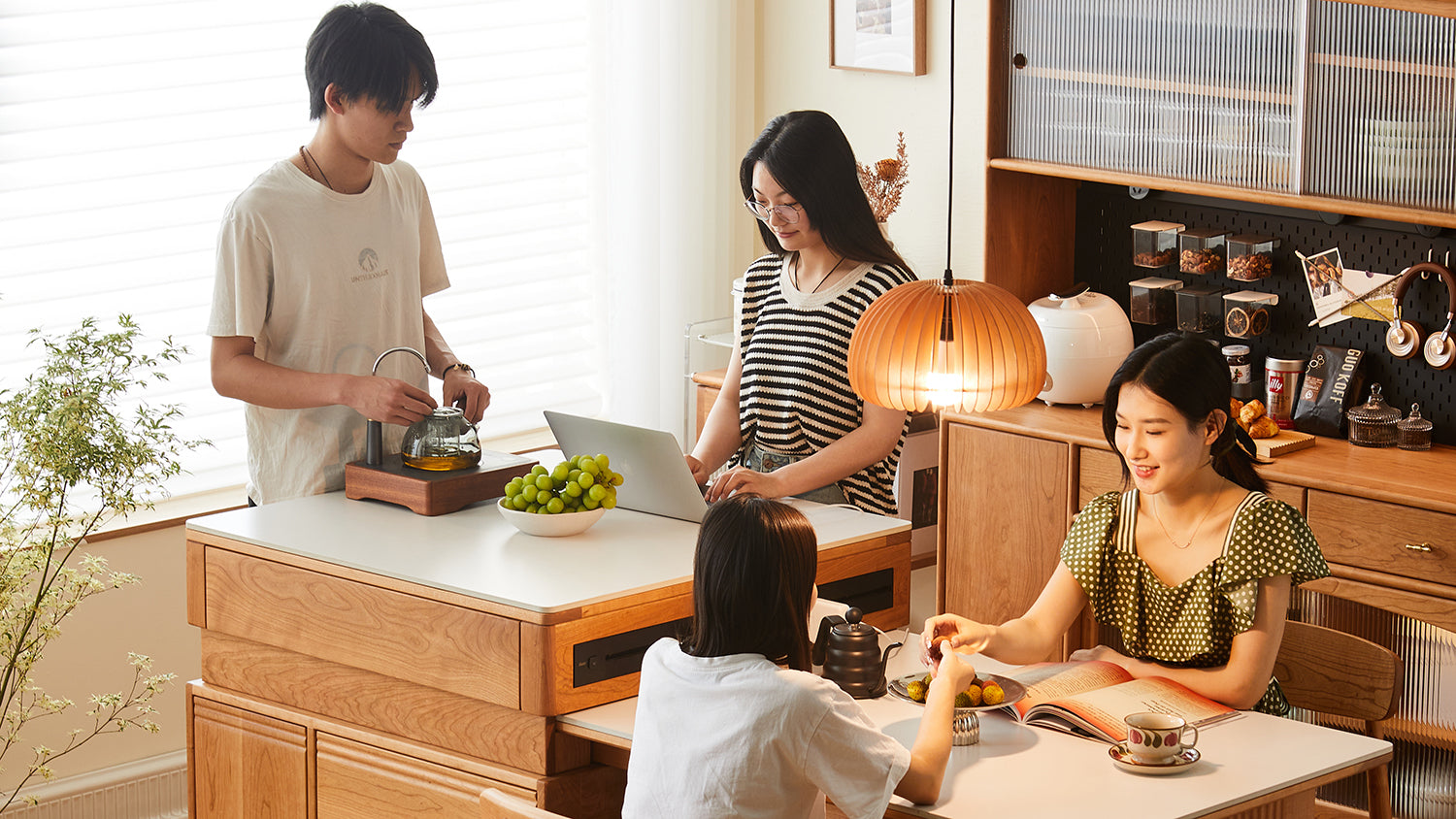

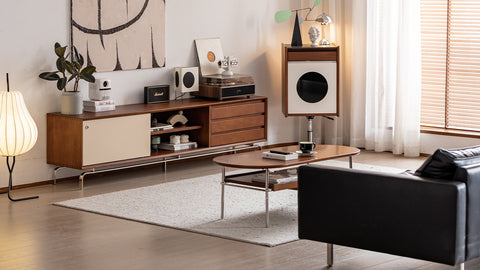

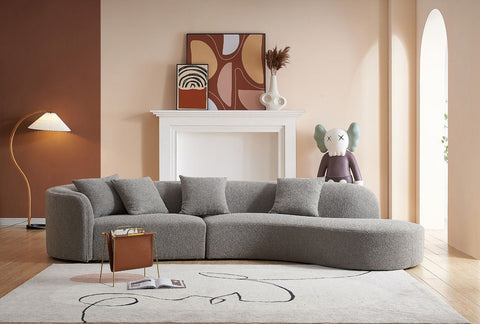
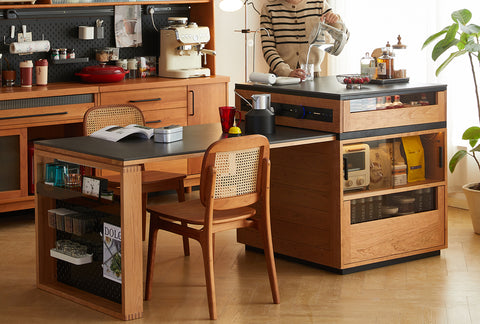
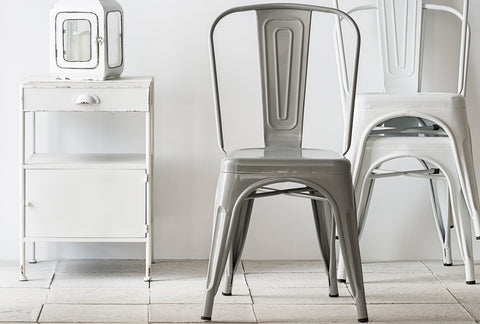
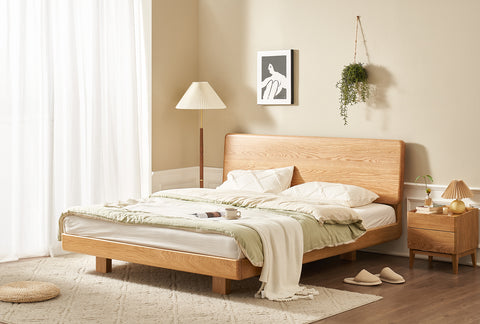
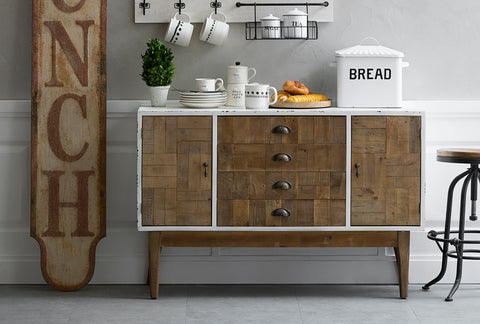




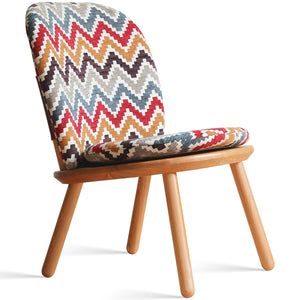
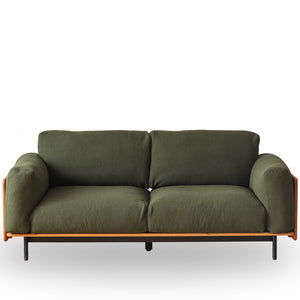
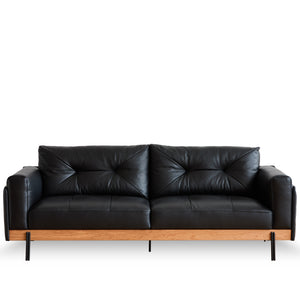
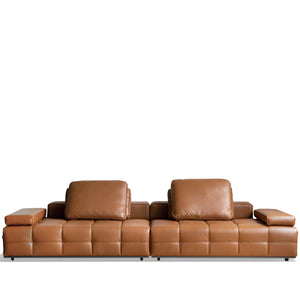
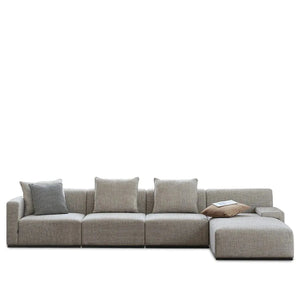
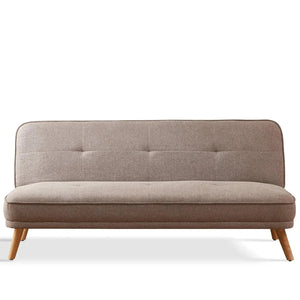
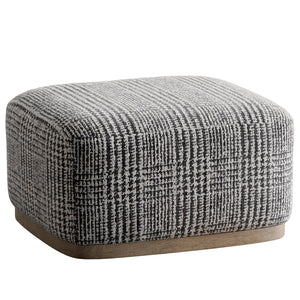

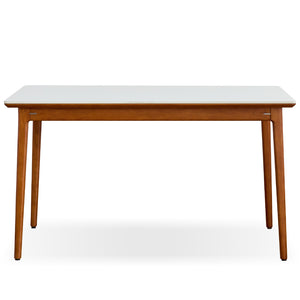
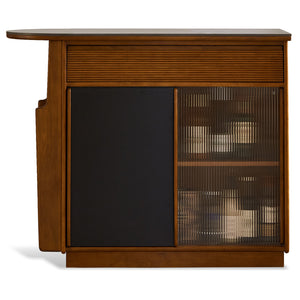
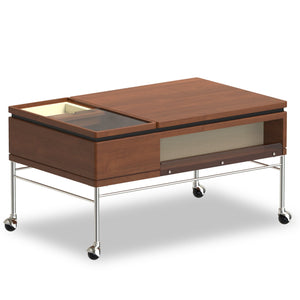
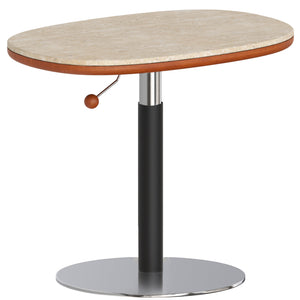
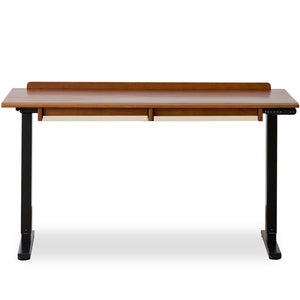
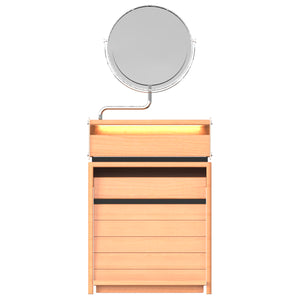

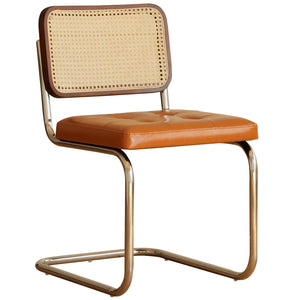
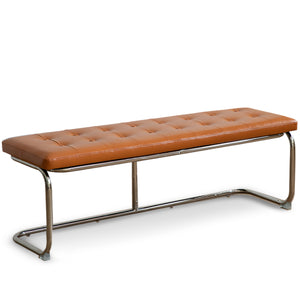
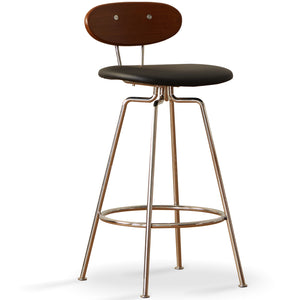

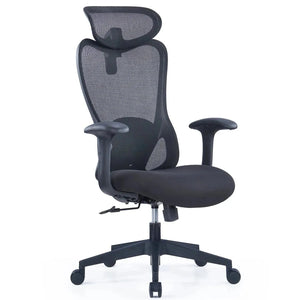

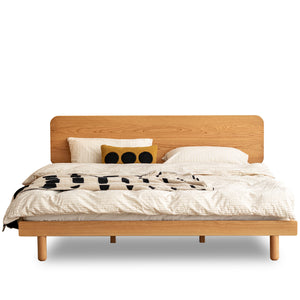


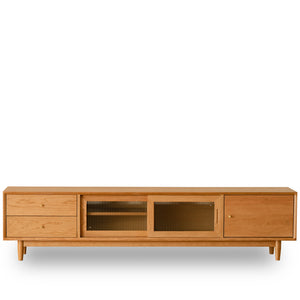
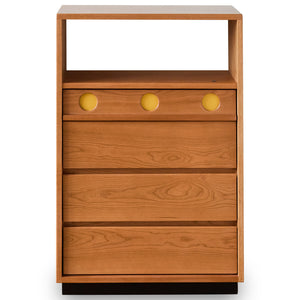
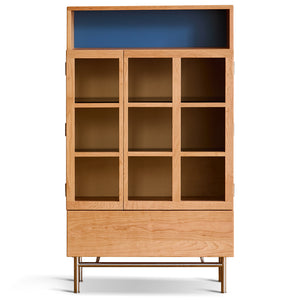
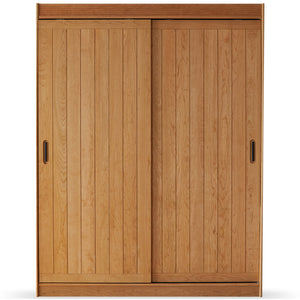
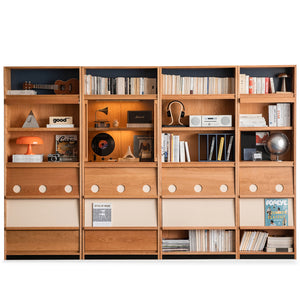

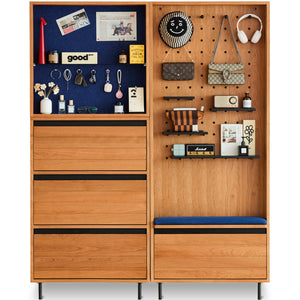
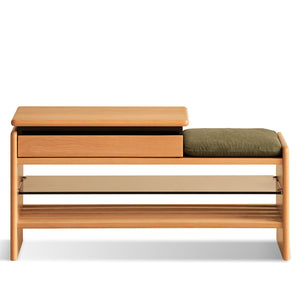
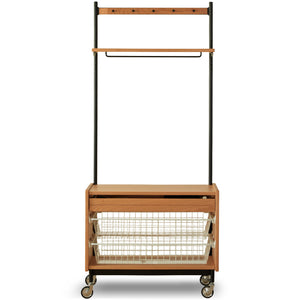
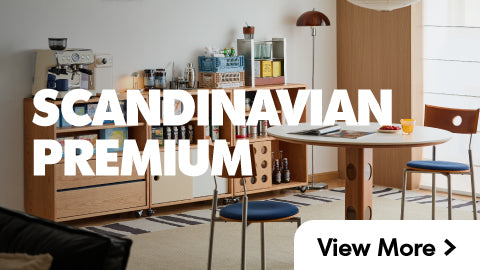





















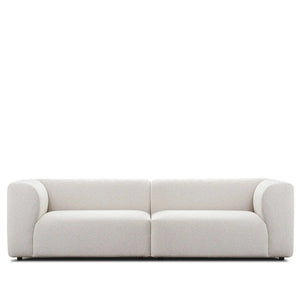




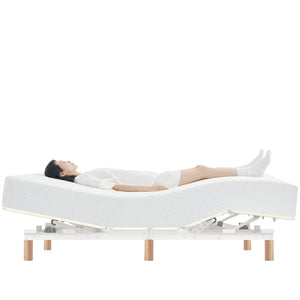
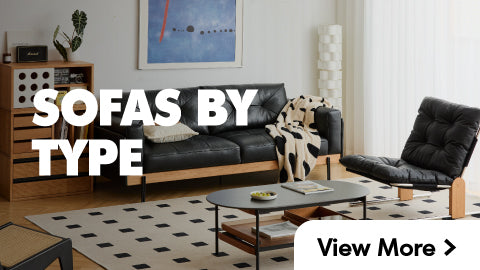
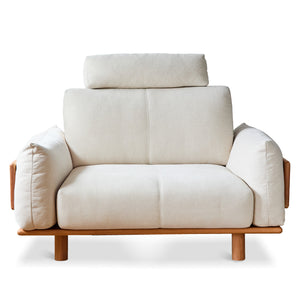

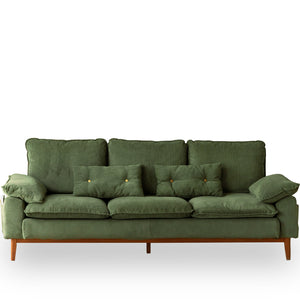
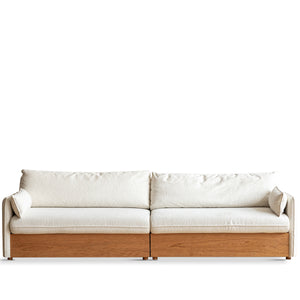
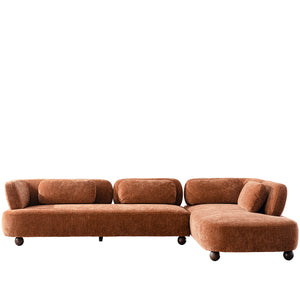
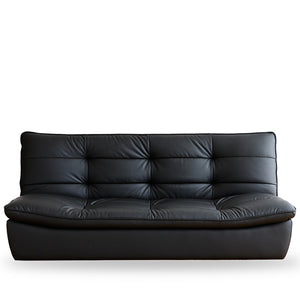
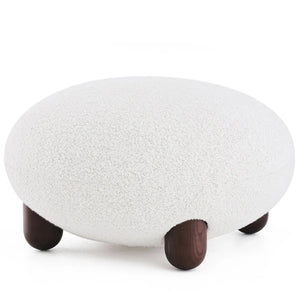

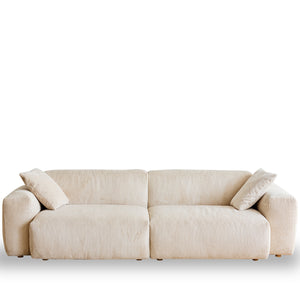
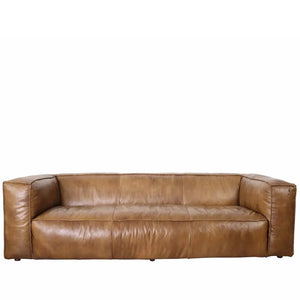
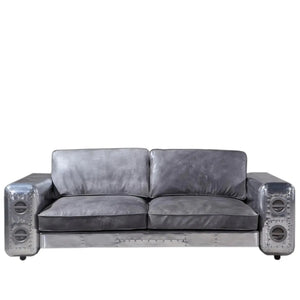
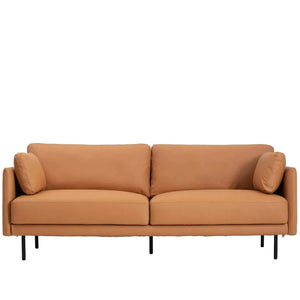
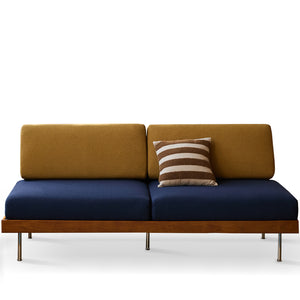
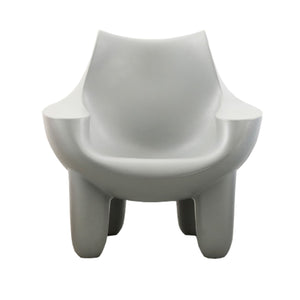


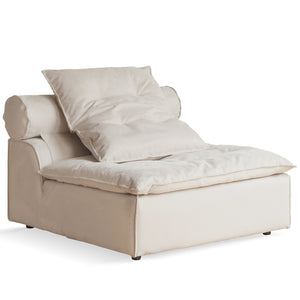

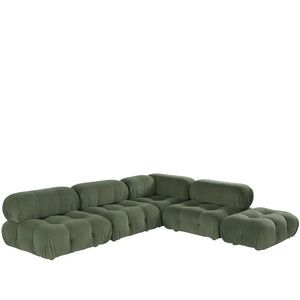
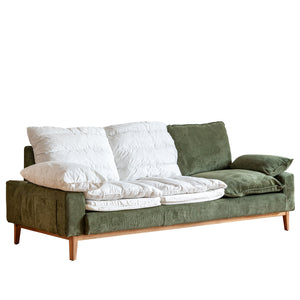
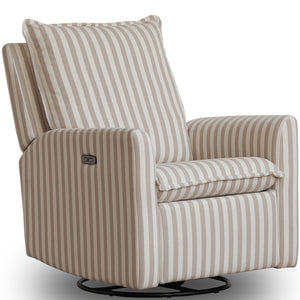

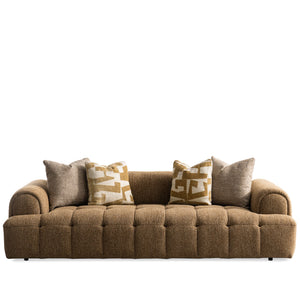

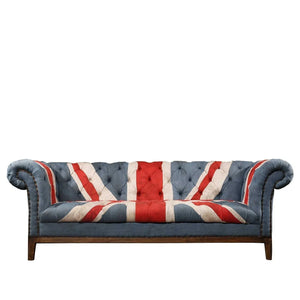
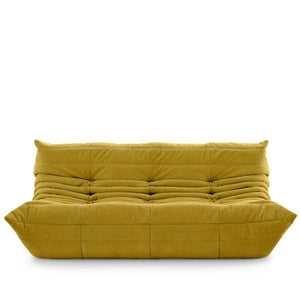
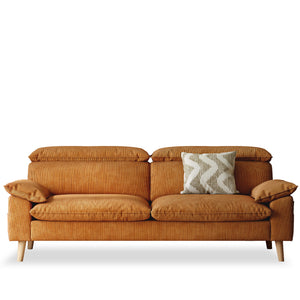
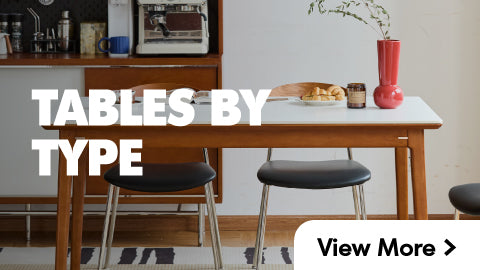
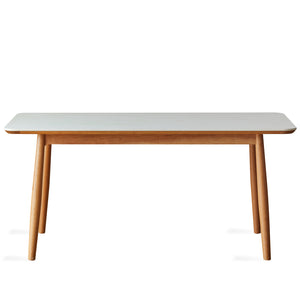
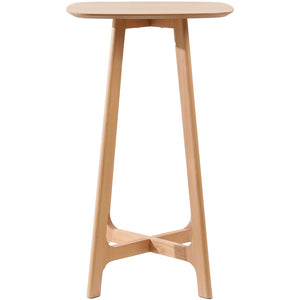
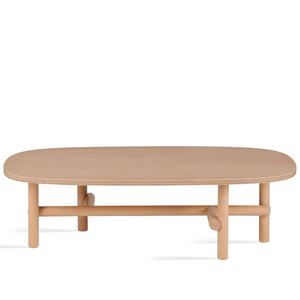
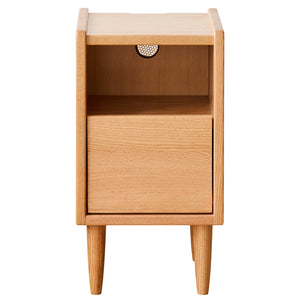
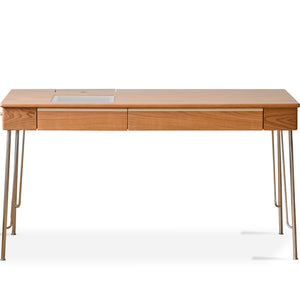
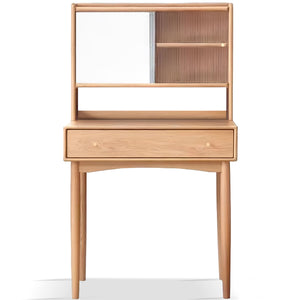
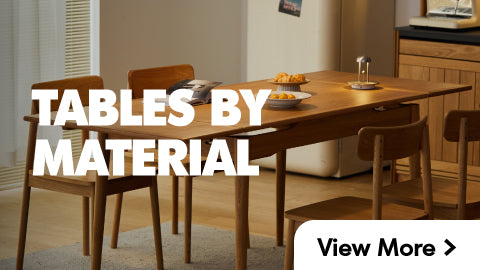
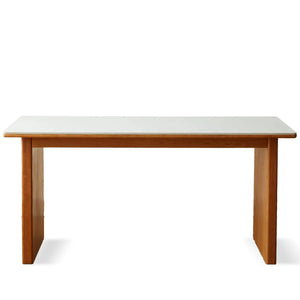
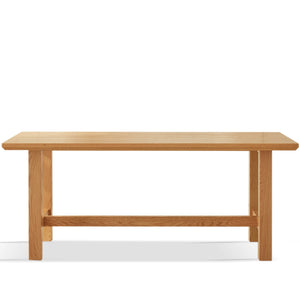
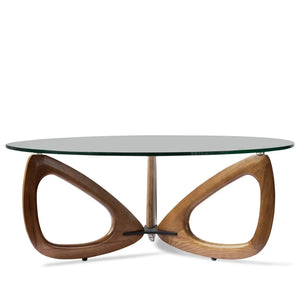
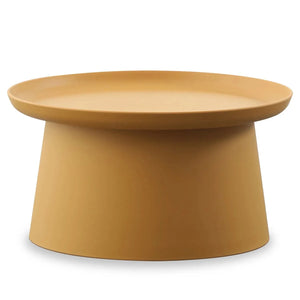

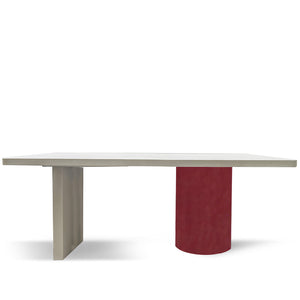
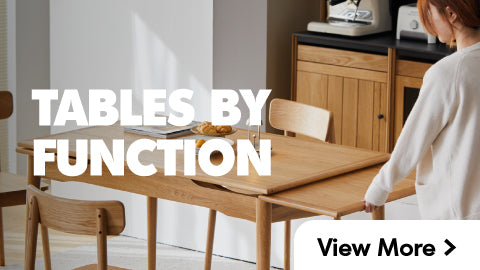
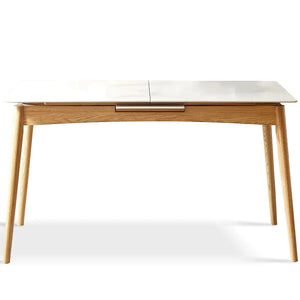
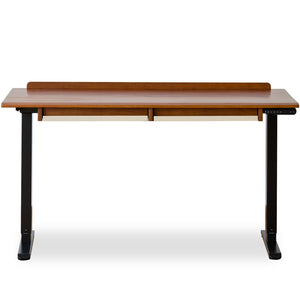
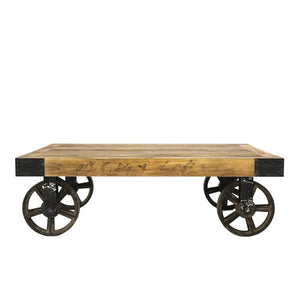

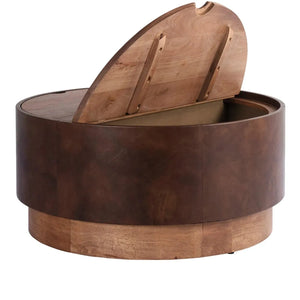
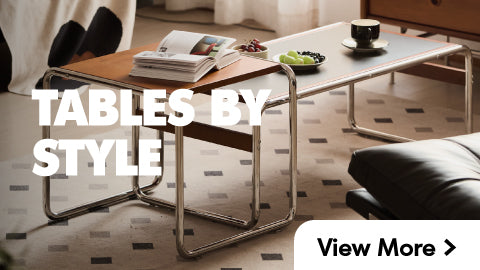
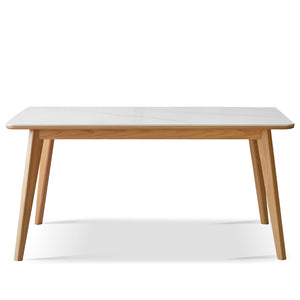

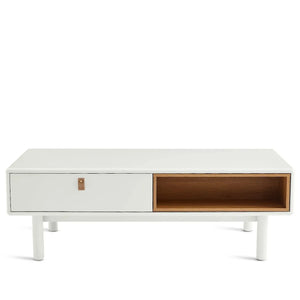
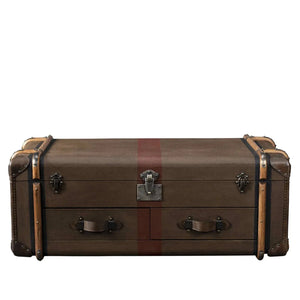
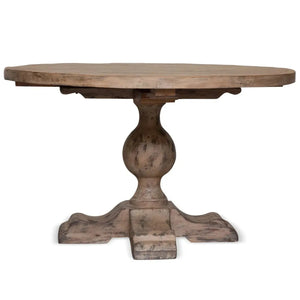
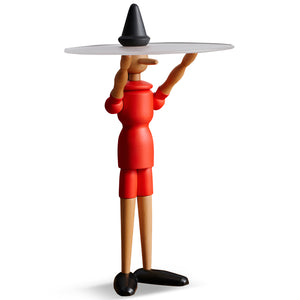

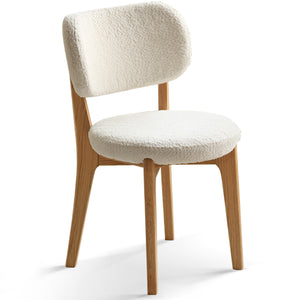
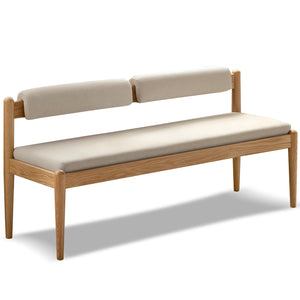
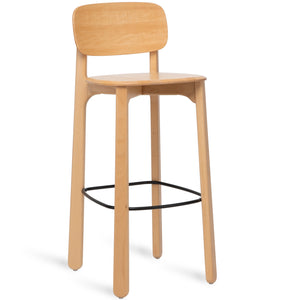
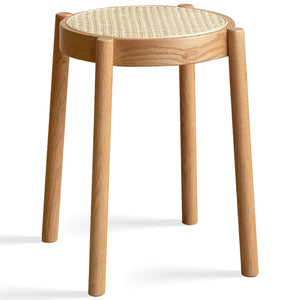
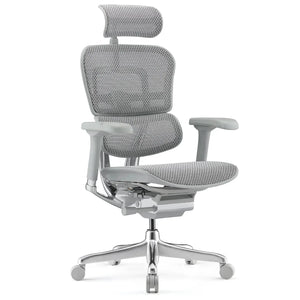
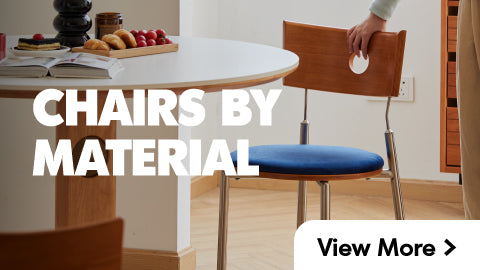
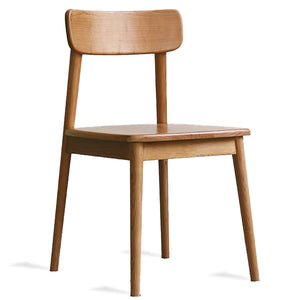
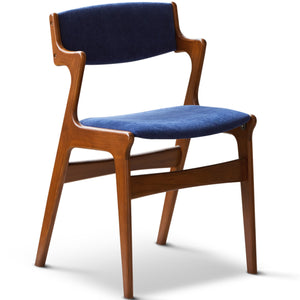
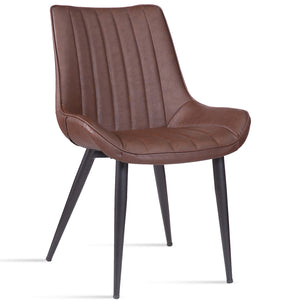
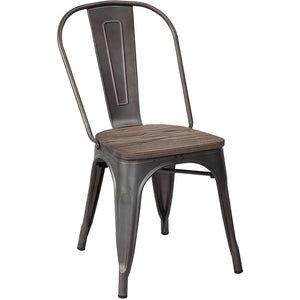
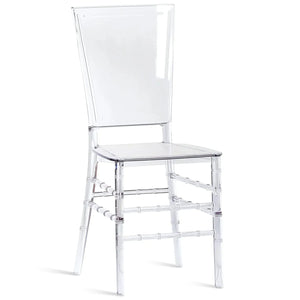
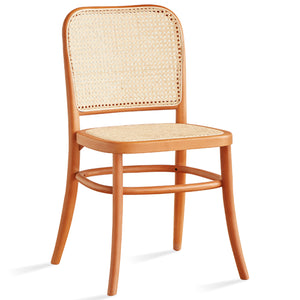
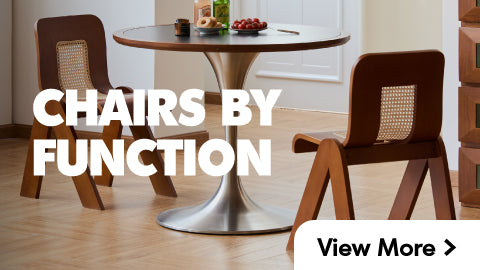
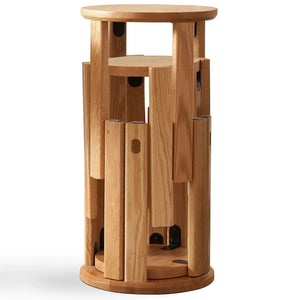

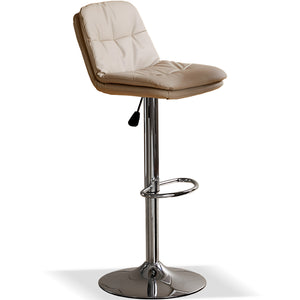
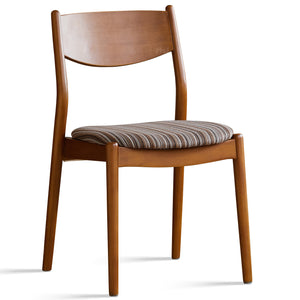
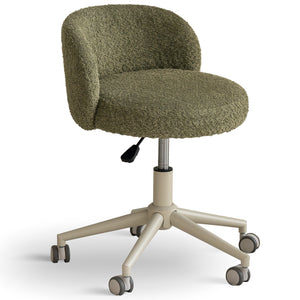
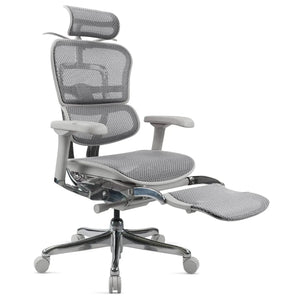

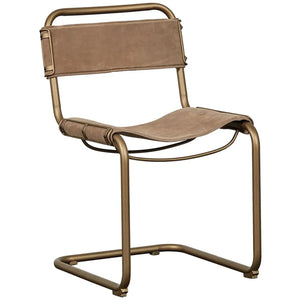
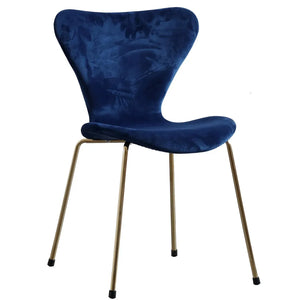
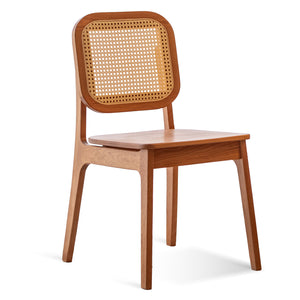
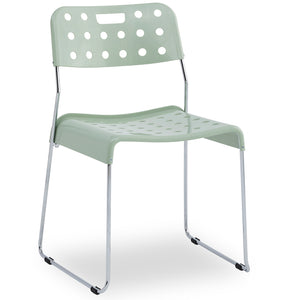
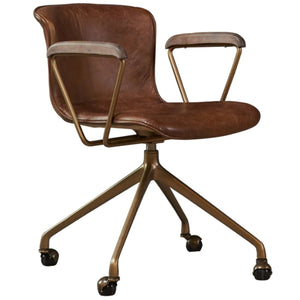


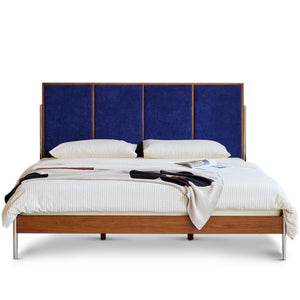

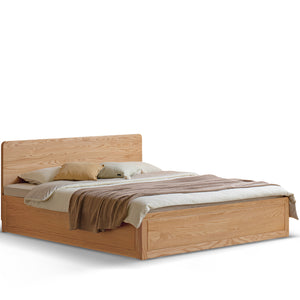
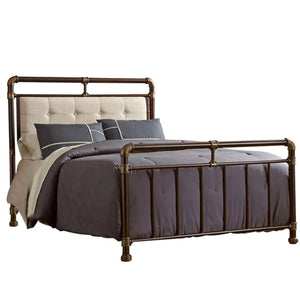
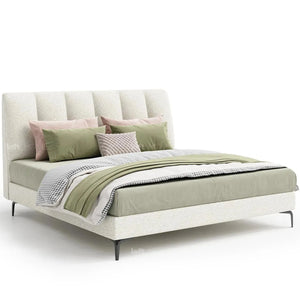
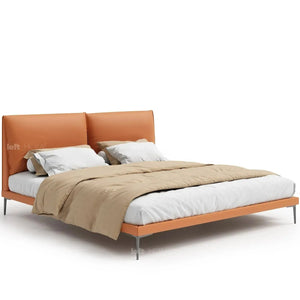
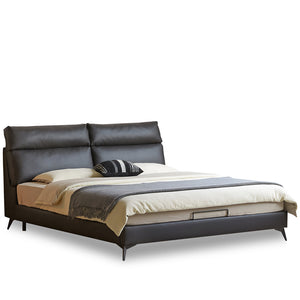
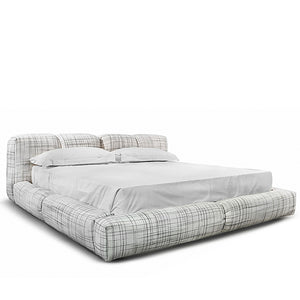

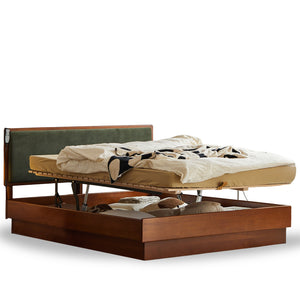


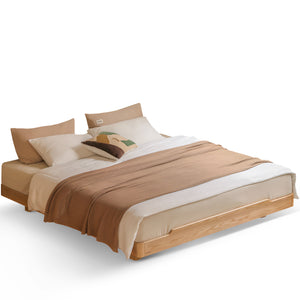
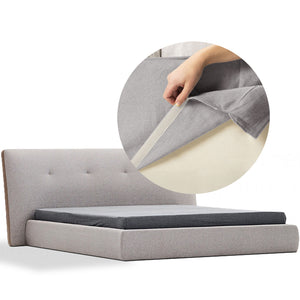
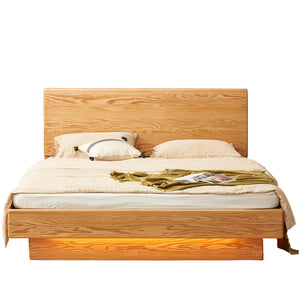
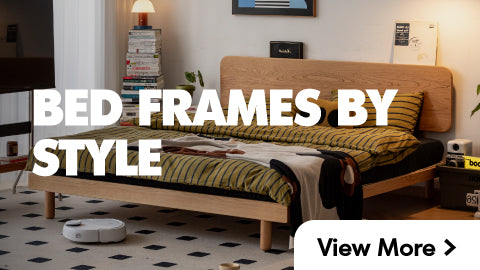
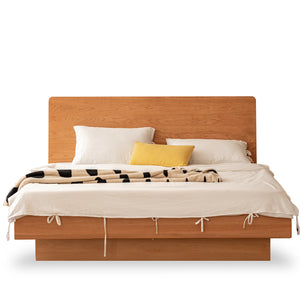
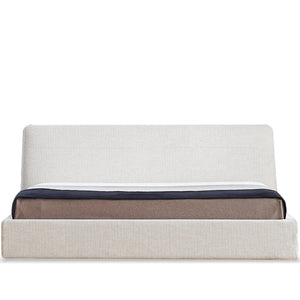
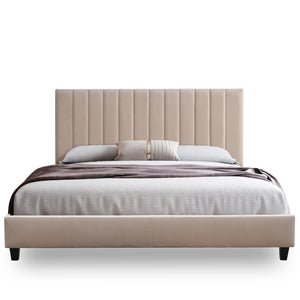
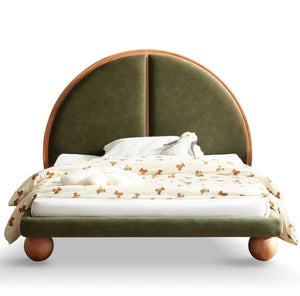
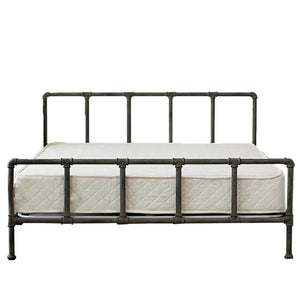

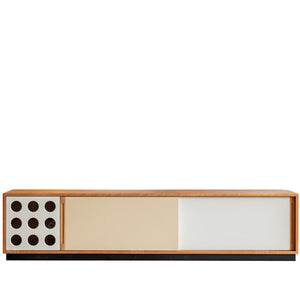

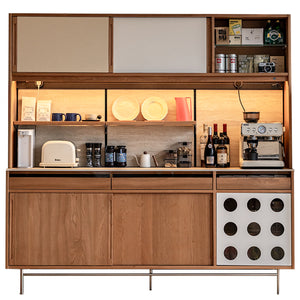
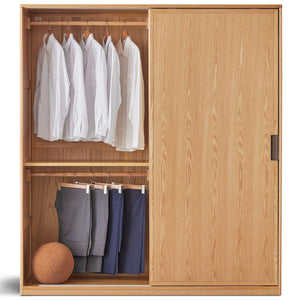
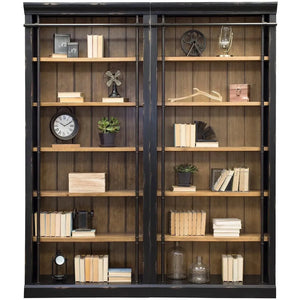
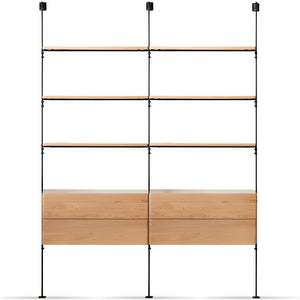
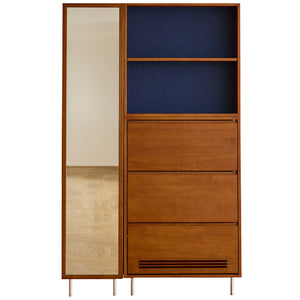
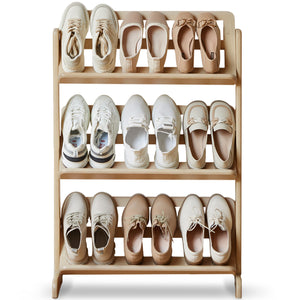
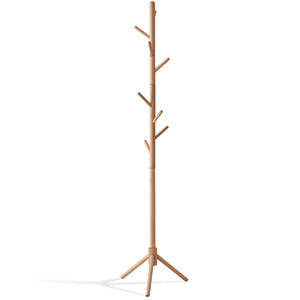

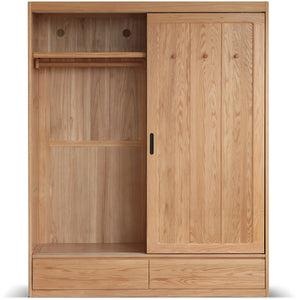
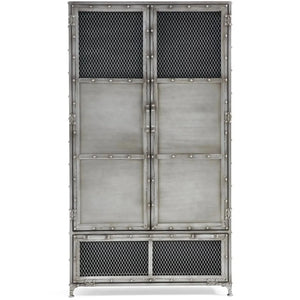
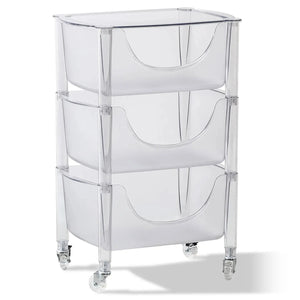
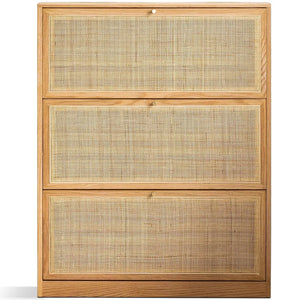
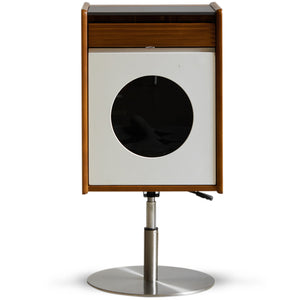
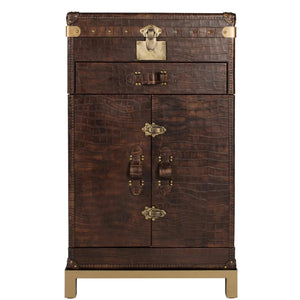

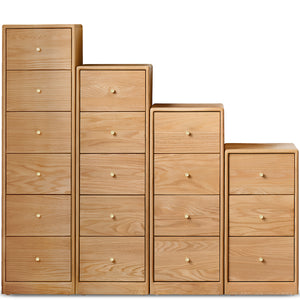
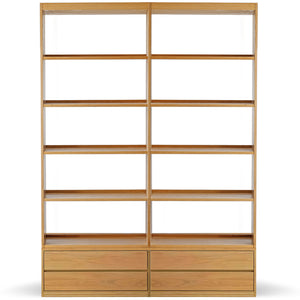
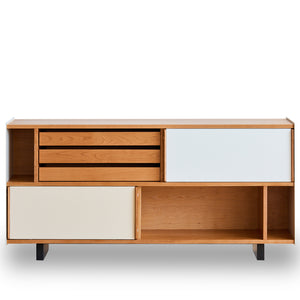
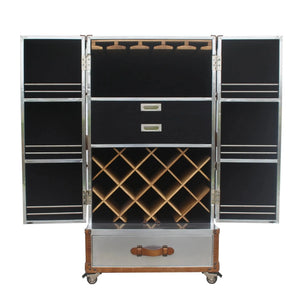
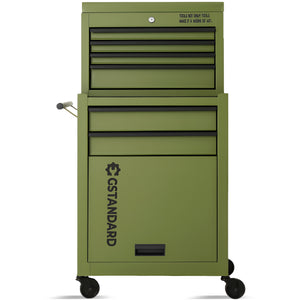


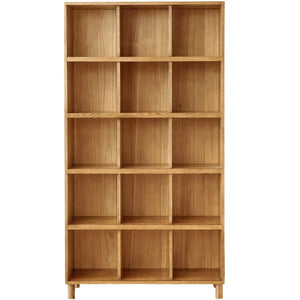

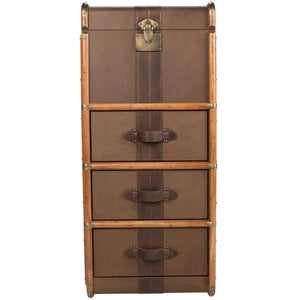
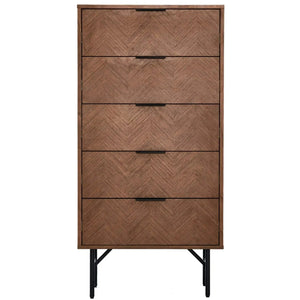
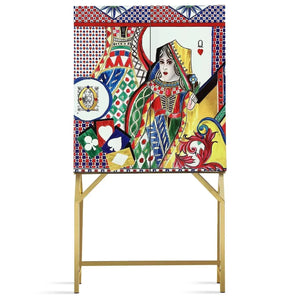
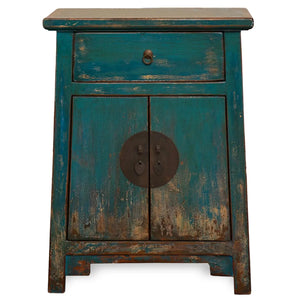


























































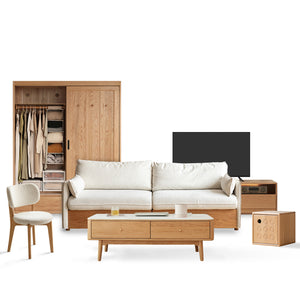
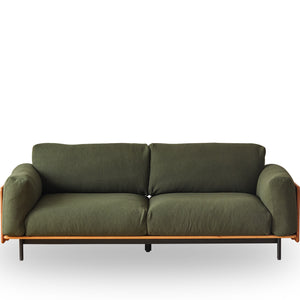
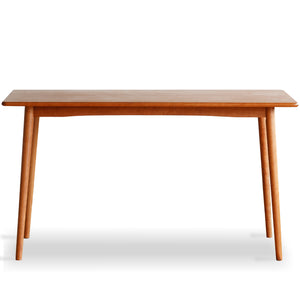
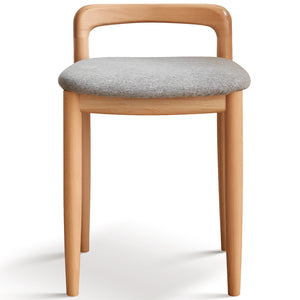
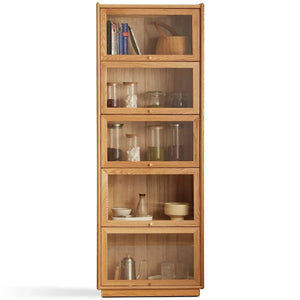
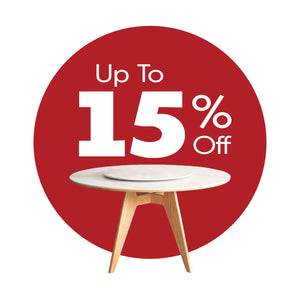


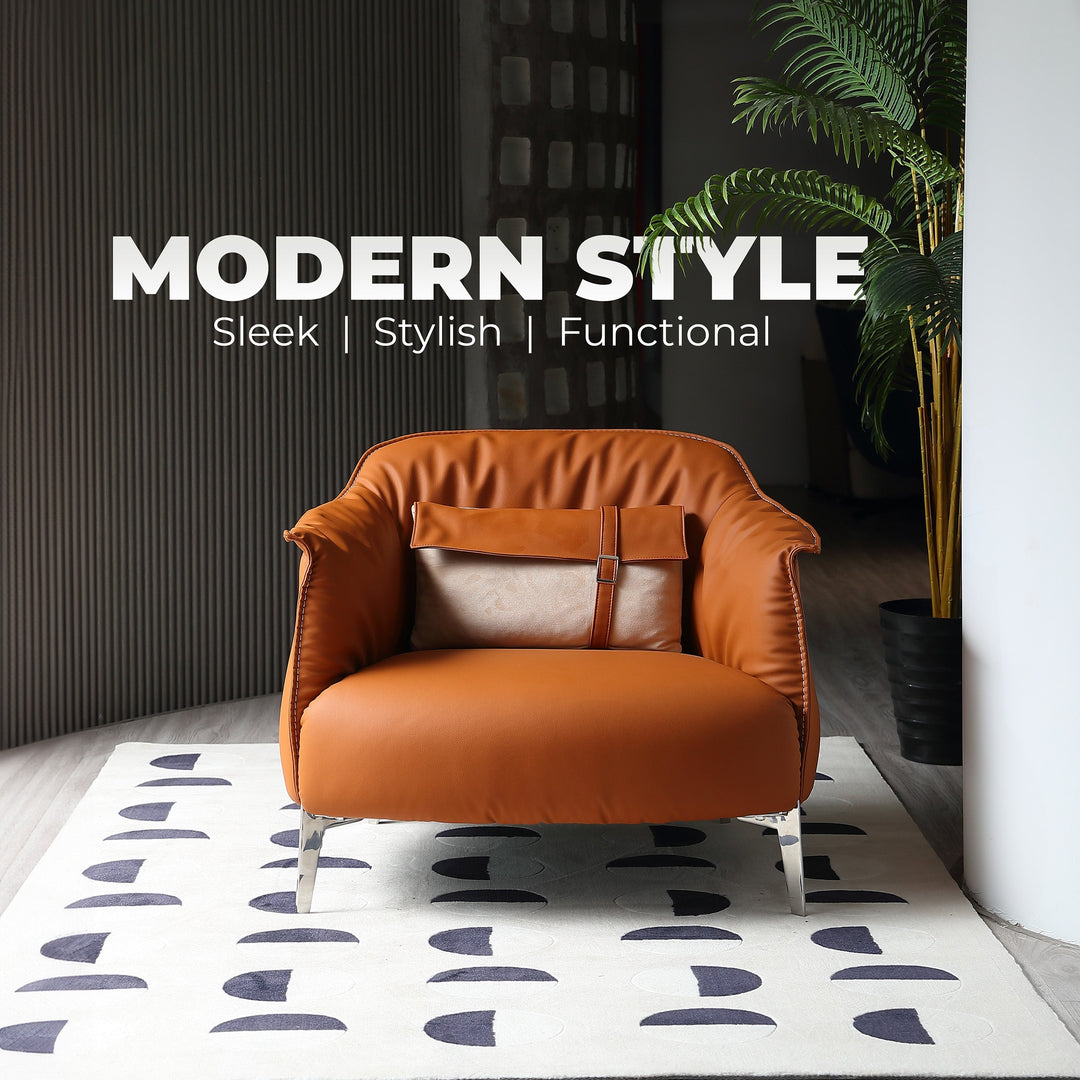
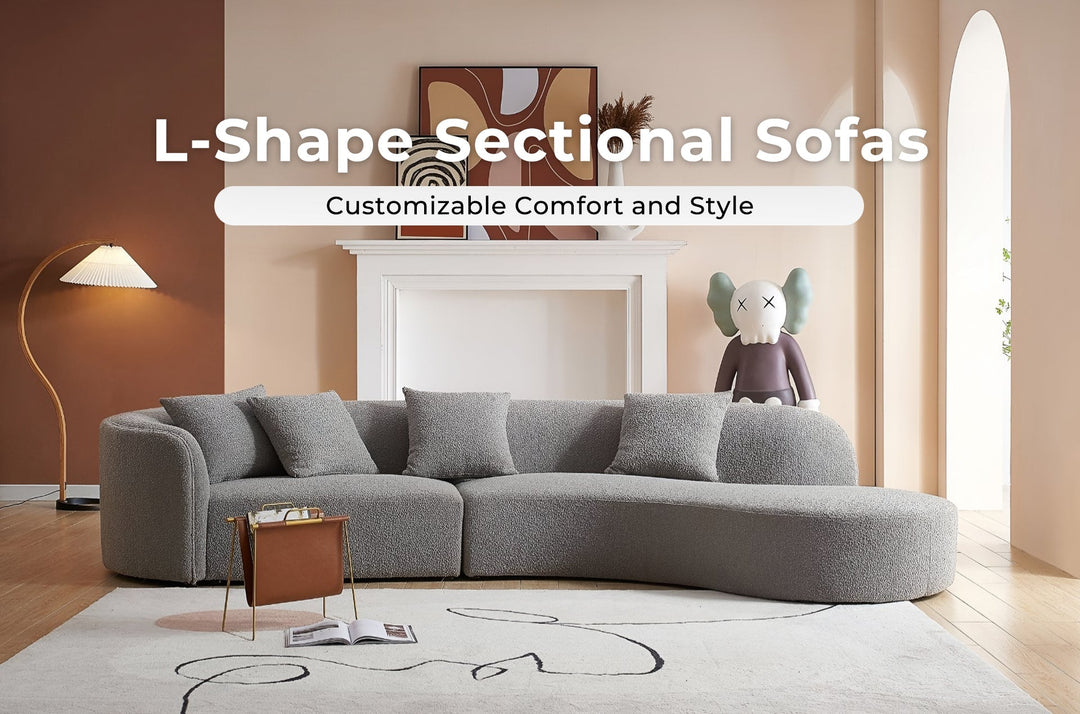

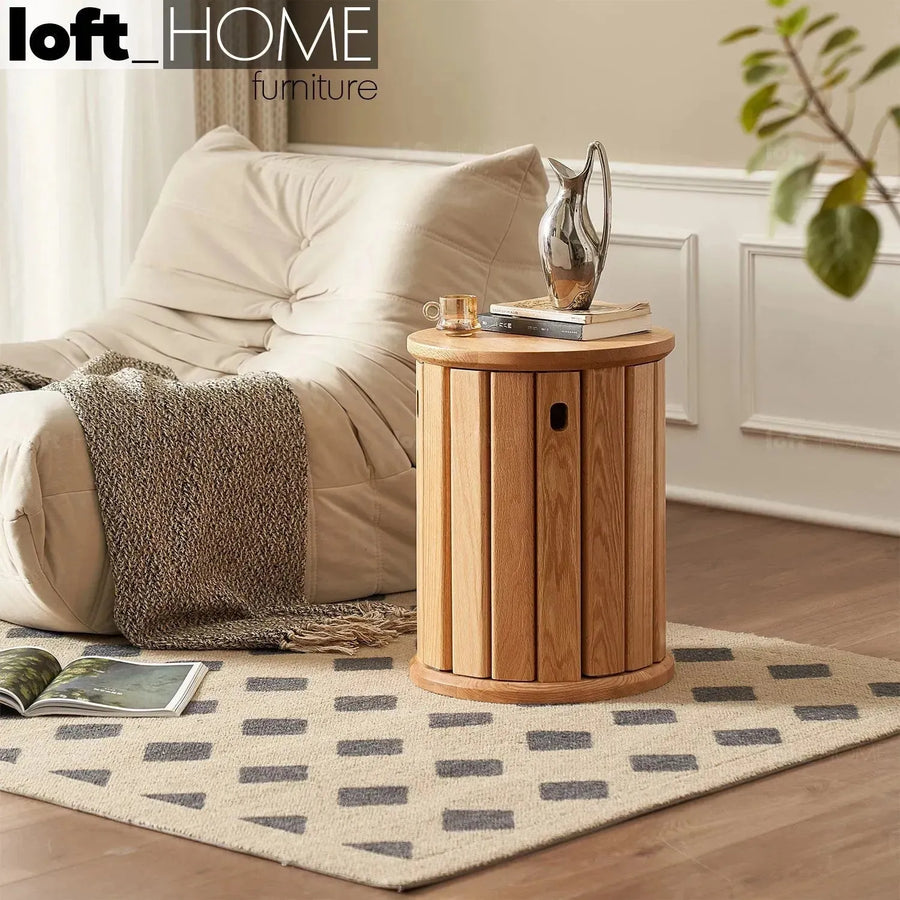
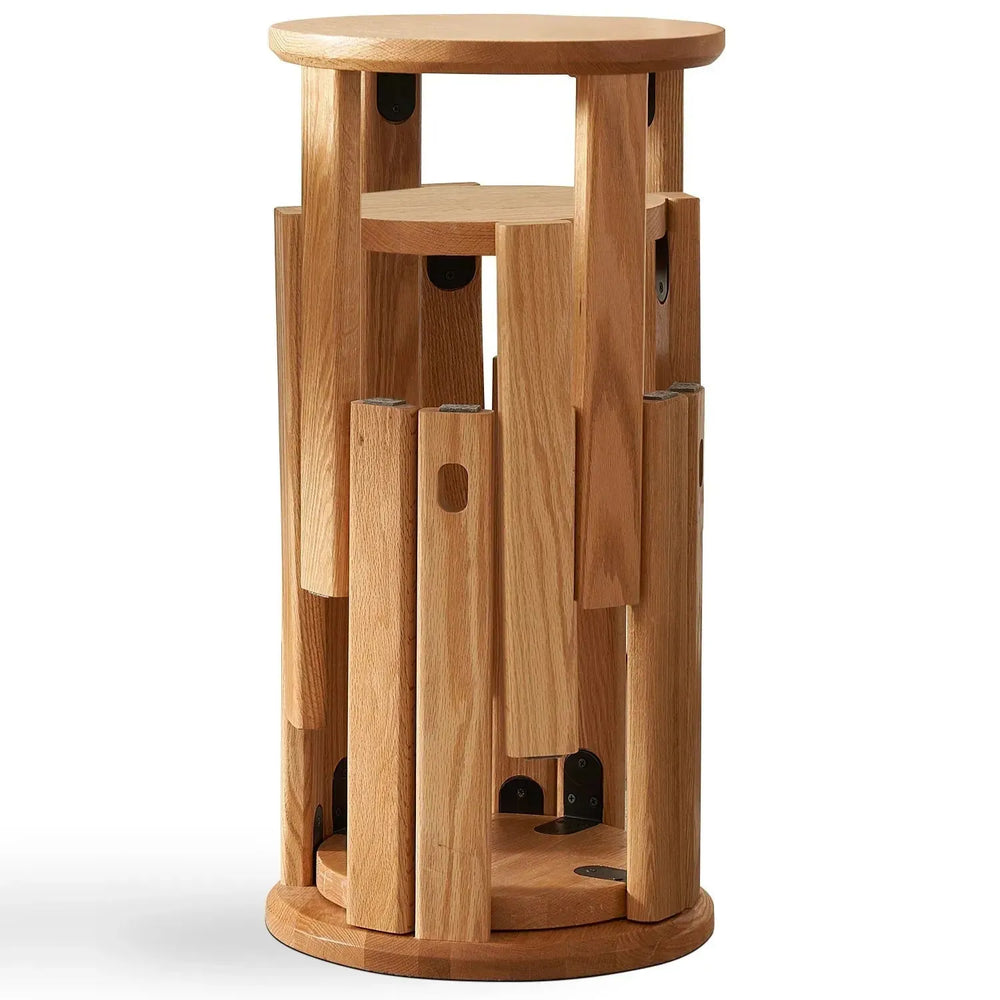



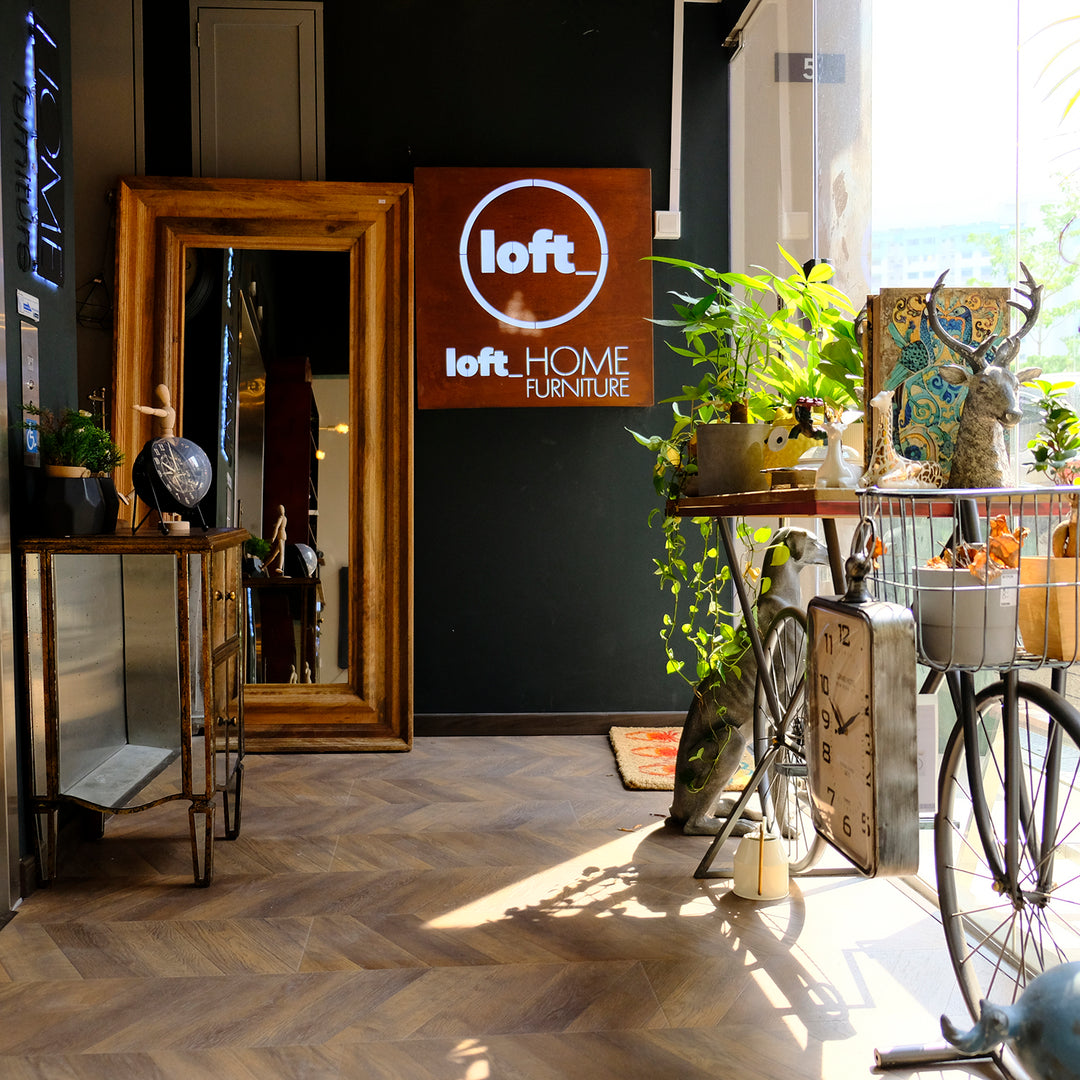
Leave a comment